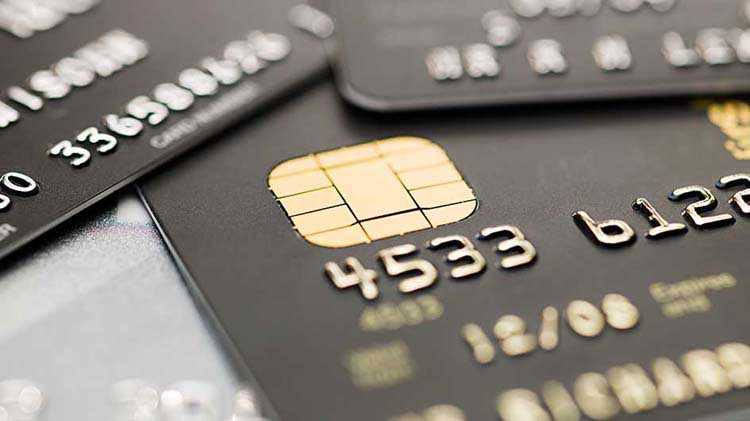The psychology of spending money and why you may be spending so much
Trying to understand how you spend your money may help you build better financial habits and boost your savings.
Ever wonder why you spent so much money on a pair of pants that don't even fit? Or buy a handful of lottery tickets when you know your chances of winning the jackpot are next to nil? You're not alone. The Nobel Prize-winning science of behavioral finance has tackled these questions for several decades and helps explain why people relate to money as they do.
In a perfect world we'd all resist the urge to splurge, and instead save the right amount for a cozy retirement. Call it gut instinct or rules of thumb: Most people rely on emotional shortcuts to make their financial decisions. Those rules, psychologists say, evolved as cognitive shortcuts in the human brain — if you think through every move you make, it takes a long time. But in the financial realm, shortcuts can make you see patterns that don't exist and point you toward irrelevant information.
By understanding the reasons for spending money and how many of your financial decisions are subconscious, you can become more aware of ways to change your usual way of doing things — which can lead to better spending habits.
Common problems and simple fixes
Problem 1: The future is distant
For early humans the most vexing threats were the most immediate — securing food and keeping marauding beasts away — not a potential threat many years later. The present is fairly safe thanks to modernity, a plentiful food supply and beasts that stay away from human population centers. But when it comes to money, we still have trouble making careful judgments about the future.
Money in the distant future is not considered as much compared to what you want to spend now. For example, a vacation next year is much more concrete than buying a home five years from now, or retiring in 30 years. The further away the goal is, the harder it is to properly evaluate all aspects around saving.
The fix: Start small.
If saving for retirement seems too daunting, perhaps begin with just 5% of your gross salary. If you earn $30,000, that amounts to $125 a month. Then boost the savings rate an additional percentage point a year, or direct pay raises to savings..
Problem 2: Credit isn't "real"
People tend to spend more with a credit card than when they pay using cash. Why? With plastic you only feel the pain of spending later when the bill arrives. Using cash makes the pain more instantaneous.
The fix: Get into the habit of using cash for day-to-day purchases.
Consider using a credit card for big-ticket items such as electronics or appliances.
Problem 3: Money doesn't translate into time
Most people know how much money they make each year. But how many could say how much they earn per hour or day? Relating an expense to how long it took you to make that amount can help you look at the decision in a different light. A salary of $65,000 a year certainly sounds better than $178 a day. When faced with day-to-day spending decisions, impulse buys like $3.50 for a cup of coffee or $65 for a new item of clothing seem like larger amounts against $178 a day.
Additionally, let’s illustrate how money saved from the $65 clothing item could grow over the years. If you save that $65 every paycheck and you get paid every two weeks, what might that savings look like in a basic savings account 5 years down the road instead of on a closet floor? $65 x 26 paychecks x 5 years = $8,450 plus any interest. So, a larger item that looks out of reach may be attainable with a little self-discipline.
The fix: When faced with a spending decision, make an apples-to-apples comparison
A $50 item represents more than a quarter of a day's earnings for someone making $65,000. Is that dinner or gadget worth so much?
Problem 4: Tracking is difficult
Many people are unaware how much money they spend each day, and the money quietly seeps out. To determine how much you spend, keep track of what's spent for 30 days, then rate each transaction. Tracking your spending can help you reprioritize where money should really be spent.
Saving is often seen as a sacrifice. However, if you start putting money aside and see the balance begin to grow, it can become more fulfilling. There are subtle ways you can adjust spending to help grow your savings by making small adjustments.
The fix: Use money-tracking software for a month to see where your money goes.
If items and categories on your list bring you little pleasure or value, redirect that spending to saving.
Decisions made with emotion
Here are some questions to help you determine if you're making an emotional financial decision.
- Does it bring me joy?
To some people, purchases, such as shoes, are pure joy. For others it might be a watch, a necktie or a decadent meal at the hottest restaurant in town. Rank your purchases on a scale of 1 to 5, with 5 being the most enjoyable. If you find most of your purchases rank low and they don't bring you much fulfillment, it's time to think twice before spending. Not only does this make your spending more meaningful, but you also might end up saving money. - What's my return for the purchase?
There's nothing wrong with buying a lottery ticket here or there, but understand your chances of winning a jackpot are extremely low (1 in 292 million). Yet people still believe they could be one of the lucky few because they see real-life examples of people who have won. They pay too much attention to low-probability events such as winning the lottery. - What impact will waiting have?
Even if you don't earn much, there's no substitute for time, which you may have in abundance when you're young. It's hard to overemphasize how powerful it is to start saving at an early age, and even to teach children to save. As you get older, life becomes more financially complicated and more expensive, and there's no way to know how much money you can dedicate to savings. Small amounts saved and invested today may pay big dividends in the future.




